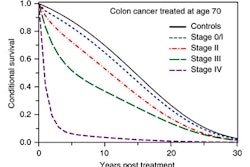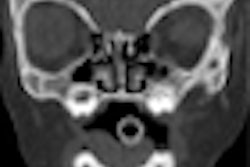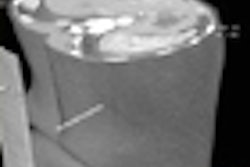Initial experience with software that calculates radiation risk based on patient age, gender, and dose suggests that radiation exposure varied by as much as 50% among facilities, according to a study presented at this week's American Association of Physicists in Medicine (AAPM) meeting.
The software, developed by Duke physicist Olav Christianson, is one of a handful of automated imaging quality assurance (QA) programs capable of estimating the risk of ionizing radiation for patients. It also may be unique in that it accounts for patient age and gender in its calculations.
Ehsan Samei, PhD, the chief medical physicist at Duke, presented results on August 4 at the AAPM conference from a scientific study using data compiled by the software. The research demonstrated the capabilities of the automated patient-specific radiation dose monitoring system, while also giving insight into to the wide variation of CT-related radiation applied to patients at a major academic medical center.
CT imaging data from CT suites distributed throughout the Duke University complex are channeled to a PACS and a secure dosimetry server. Dose reports are generated by the CT scanner for each procedure, isolated by DICOM routing software, and processed by an optical character recognition algorithm to extract dose-length product (DLP).
Effective dose is calculated from DLP using patient age, gender, study description, and imaging protocol data drawn from DICOM headers.
The software generates a risk index for individual procedures and patients. CT equipment performance can also be evaluated for the entire healthcare system over time, while other variables include individual hospitals, makes and models of equipment, and even imaging modalities for specific clinical indications. Individual patients exposed to high levels of radiation can be identified.
"This helps us to estimate each patient's dose level and potentially [helps establish] a more reliable level of risk for them," Samei said.
Future software upgrades will also add patient body mass index to the automated radiation risk assessment.
The study was based on 6,500 CT studies performed during a five-week period at Duke University Medical Center and Duke Raleigh Hospital. Chest, abdomen/pelvis, and routine head exams were evaluated. Overall, the researchers found the amount of radiation and risk from individual scans varied from 30% to 50%, Samei said.
The study demonstrated that the dose monitoring program can permit quality assurance on a scale considered impractical before its development, he said. Individual CT studies that substantially deviated from the median were singled out for further review.
The high amount of variability identified by the software suggests opportunities for dose reduction and protocol standardization.
"One of the beautiful things about this tool is that we can now prospectively go to these institutions and say, 'Let me look at your protocol and see how we can adjust it to perhaps make it better,' " Samei said.



















